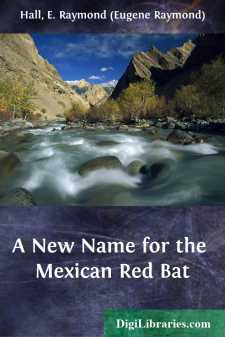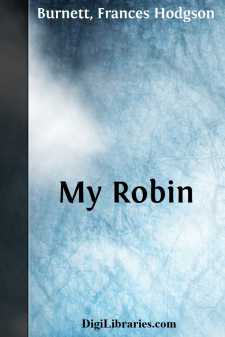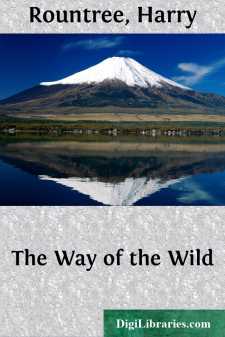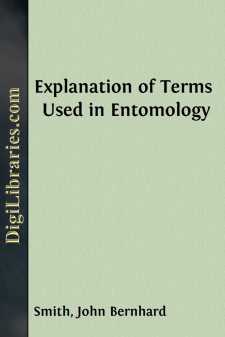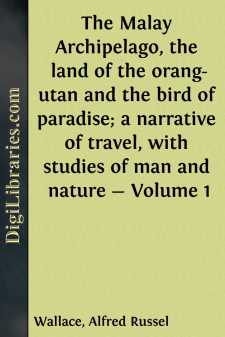Nature
Nature Books
Sort by:
by:
Cecil Alden
OUR FRIEND THE DOG I I have lost, within these last few days, a little bull-dog. He had just completed the sixth month of his brief existence. He had no history. His intelligent eyes opened to look out upon the world, to love mankind, then closed again on the cruel secrets of death. The friend who presented me with him had given him, perhaps by antiphrasis, the startling name of Pelléas. Why...
more...
When Gerrit S. Miller, Jr., published his "Revision of the North American Bats of the Family Vespertilionidae" (N. Amer. Fauna, 13:1-140, 3 pls., 39 figs. in text, October 16, 1897), the red bat, Lasiurus borealis, was known from the southern half of Mexico but he did not know that the hoary bat, Lasiurus cinereus, also occurred there. Therefore, the name A[talapha]. mexicana Saussure (Revue et...
more...
MY ROBIN There came to me among the letters I received last spring one which touched me very closely. It was a letter full of delightful things but the delightful thing which so reached my soul was a question. The writer had been reading "The Secret Garden" and her question was this: "Did you own the original of the robin? He could not have been a mere creature of fantasy. I feel sure you...
more...
by:
Harry Rountree
I If his father had been a brown bear and his mother a badger, the result in outward appearance would have been Gulo, or something very much like him. But not all the crossing in the world could have accounted for his character; that came straight from the Devil, his master. Gulo, however, was not a cross. He was himself, Gulo, the wolverine, alias glutton, alias carcajou, alias quick-hatch, alias...
more...
BIRDS FROM A CITY ROOF I laid down my book and listened. It was only the choking gurgle of a broken rain-pipe outside: then it was the ripple and swish of a meadow stream. To make out the voices of redwings and marsh-wrens in the rasping notes of the city sparrows behind the shutter required much more imagination. But I did it. I wanted to hear, and the splash of the water helped me. The sounds of wind...
more...
FOREWORD. When, some time since, in consequence of continuing demands, the Brooklyn Entomological Society resolved to publish a new edition of its Explanation of Terms used in Entomology, and entrusted the writer and two associates with the task of preparing the same, it was believed that a little revision of definitions, the dropping of a few obsolete terms and the addition of a few lately proposed,...
more...
CHAPTER I. PHYSICAL GEOGRAPHY. From a look at a globe or a map of the Eastern hemisphere, we shall perceive between Asia and Australia a number of large and small islands forming a connected group distinct from those great masses of land, and having little connection with either of them. Situated upon the Equator, and bathed by the tepid water of the great tropical oceans, this region enjoys a climate...
more...
IMPORTANCE OF RODENT GROUPS. As the serious character of the depredations by harmful rodents is recognized, State, Federal, and private expenditures for their control increase year by year. These depredations include not only the attacks by introduced rats and mice on food materials stored in granaries, warehouses, commercial establishments, docks, and private houses, but also, particularly in the...
more...
CHAPTER I It is in spring that wild birds make their strongest appeal to the human mind; in fact, the words "birds" and "spring" seem almost synonymous, so accustomed are we to associate one with the other. All the wild riotous singing, all the brave flashing of wings and tail, all the mad dashing in and out among the thickets or soaring upward above the tree-tops, are impelled by the...
more...
I The Cute Coyote AN EXEMPLARY LITTLE BEAST, MY FRIEND THE COYOTE If you draw a line around the region that is, or was, known as the Wild West, you will find that you have exactly outlined the kingdom of the Coyote. He is even yet found in every part of it, but, unlike his big brother the Wolf, he never frequented the region known as Eastern America. This is one of the few wild creatures that you can...
more...



